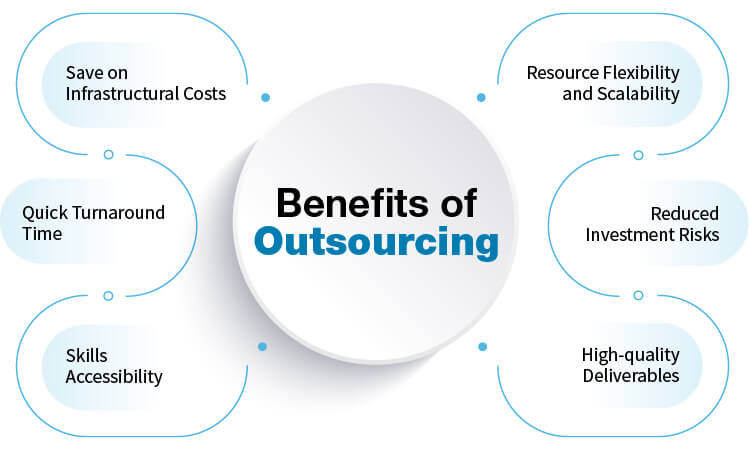- Outsourcing helps building engineering consultants fully leverage BIM by getting expertise without adding inflexible overheads
- Outsourcing helps to add scalability and flexibility to the BIM design pipeline, enabling consultants to tackle more projects
- Strategic partnerships help BIM consultants to access trained staff, latest tools and infrastructure with visible benefits in costs, time, and quality of deliverables
A US building engineering consultant firm partners with a BIM outsourcing firm and transforms their operations. Over 15 years, they transitioned from direct outsourcing to managed offshore center and increase their staff from 10 to 200+, proving the model’s success and scalability.
Use of BIM is indispensable in modern building engineering for tackling the complex coordination and optimization needed by lean and ‘connected’ projects. But the inflexible overheads associated with in-house technical staff and infrastructure, holds back building engineering consultants from fully realizing the benefits of BIM. Here, outsourcing arrives as a natural extension of delegating work to experts, with the added advantages of operational scalability, flexibility, and reduced risks and costs.
The In-house vs Outsourcing Debate

The in-house vs outsourcing debate had once grabbed public attention when the outsourcing model was new. Then businesses on both sides often made mistakes in negotiations, coordination, and in choosing partners. But with the world opening up and internet and cloud apps monitoring coordination and communication, that debate is now passé.
Today, people’s fears about outsourcing work usually stem from their inabilities to select the right offshore partner and negotiate a favorable deal.
The success of outsourcing or offshoring as a business model is no more open to debate.
Of course, the choice of the offshore partner, right or wrong, will affect the quality of returns. The same will happen if you hire the wrong people directly in house.
With the BIM market slated to grow to 4.21 billion USD by 2024, quick and efficient designing is the need of the hour. Outsourcing work to specialized units offshore is more advantageous than hiring and training in-house talent for every conceivable task.
Where outsourcing or offshoring makes a difference in BIM workflows
In-house teams in a lean environment avoid overburdening themselves in terms of staff and infrastructure. Naturally, they can’t maintain the scalability and flexibility of resources and infrastructure needed to tackle high work volume fluctuations. Resource hiring and training, infrastructure, licensing, etc., all add to overall project costs, reducing operational efficiency. And then, once work peaks are over, either there is the dead load of extra staff, or stressful layoffs and firing.
Outsourcing efficiently bypasses such situations, allowing lean operations to run full scale on skeletal supervisory staff. The output quality, quantity, and responsiveness continue to match those of bigger establishments.
Also, conventional CAD tools that most in-house teams use lack the capabilities of the software and automation tools used by specialist offshore engineering firms. Offshoring to experts with needed industry experience and proficiency in software use speeds up the BIM design cycle while significantly improving quality.
Add flexibility and scalability to your BIM modeling and detailing projects.
Lower project operation cost and increase efficiency.
Explore HitechDigital’s BIM services →The IMEG Story
IMEG has been at the forefront of high-end building design and infrastructure engineering in the USA. Navigating through complex projects and collaboration challenges, IMEG creates high-performance building infrastructure regardless of project size.
In 2007, IMEG, earlier known as KJWW, was looking to tie up with a reliable outsourcing partner. After working with many companies globally, they chose HitechDigital.
They decided on a BTO (Build Transfer and Operate) model with HitechDigital as the company’s managing partner for the offshore operations in India. IMEG opened their first office in India in Feb 2008.
What started with 10-12 employees in an outsourcing and then offshore center team is now a workforce of over 200 employees. With major benefits reaped in terms of cost, time, and deliverables, IMEG opened a second office in India. HitechDigital helped create the building and technological infrastructure, hire skilled experts, and get the required permissions for the new office.
“HitechDigital has really been a great part of IMEG. We have had a great relationship with HitechDigital for over a decade now. We have developed engineers, CAD operators and it is really difficult when you are 9000 miles away. You need to have somebody you can really trust, and it’s great to have HitechDigital as a business partner.”
How IMEG benefitted by collaborating with HitechDigital as a business partner
Cost Benefits
The costs of operating from India were much lower. IMEG knew that. But going first for outsourcing to HitechDigital helped them understand ground realities in detail, before committing large investments. With HitechDigital in the loop, they could build their offshore center, hire staff, train them, and set up infrastructure transparently. All this, while achieving the cost savings they had planned for.

How are BIM and digital twins used in top construction projects?
- BIM and Digital Twins provide unique yet complementary capabilities.
- BIM focuses on design and construction; Digital Twins enable real-time monitoring and predictive maintenance.
- Integrating BIM and Digital Twins enhances decision-making, asset management, sustainability, and efficiency.
Time Zone Benefits
IMEG wanted to reduce turnaround time by offshoring. And competency, expertise, experience, and technological proficiency of their offshore partner, HitechDigital, helped them realize their aims.
Time zone benefits made a big impact. The IMEG team worked during the day at the US office and sent their daily design requirements to their offshore center managed by HitechDigital. By the next morning, when they got back to work, the work was ready at their tables. It helped them to keep operations running even when they were asleep.
Knowledge, Expertise, and Software Proficiency
HitechDigital specializes in BIM services and has a talented team with considerable industry experience. By working with HitechDigital and keeping them as a managing partner, IMEG ensured a supply of BIM specialists. They also ensured staff training and consultancy, and overall support from an Indian local partner with global experience, and proven excellence. With HitechDigital being long users of the software that IMEG used, they had fallback support from all angles.
Power to Scale Up
Depending on the project, HitechDigital was able to add more architects, designers, drafters, engineers, and other professionals on demand. The ability to ramp up staff and infrastructure helped IMEG to scale without issues, and hire staff who met the company hiring benchmarks. HitechDigital gave IMEG the support to maintain a low-cost buffer, and reduce infrastructure costs, overheads and project delays with the needed BIM professionals.
As a 100% employee-owned firm, IMEG’s team is its biggest asset. Providing an environment of perpetual growth, employee culture fueled by engagement, continuous skill upgrades, and flexibility, has enabled the teams to go beyond mere possibilities.
To Conclude: BIM Outsourcing and Offshoring Is a Win-Win Scenario
BIM outsourcing for architectural consultants and building engineering ensures a win-win situation for both the firm and its outsourcing partner. Augmenting in-house teams with outsourced skills and talent shrinks overhead expenses and additional workforce needs. Direct offshore centers help in selecting the right talent, utilize time-zone differences, and lower operation costs.
A reliable offshore BIM partner adds support for accelerated project cycles, error-free 3D models, and simplifies overall processes and workflows. Freeing up resources with BIM outsourcing projects, or offshore centers, helps firms scale up easily without high costs or complications.







